The arrival of warm weather means summer is coming and peak swimming season is right around the corner. However, when looking for spots to swim, always be mindful of looking at the Harmful Algal Bloom (HAB) index. HAB’s are when algae, blue-green cyanobacteria, densely grows in a body of water making it look green and smell foul. Not only does the water look odd, it actually becomes dangerous due to toxins that the algae secrete. This can cause issues to everything living in or around the contaminated water source, as the toxins are extremely fatal. In freshwater sources, HAB’s will most likely look green to a rusty orange while saltwater blooms can have a vibrant red coloration. There will also be a distinct “rotten” smell that comes from the water which comes from the constant decomposition of the algae and other living beings that have been affected by the blooms (CDC, 2021).
When an instance of HAB occurs in a waterway, there are many immediate concerns that arise for wildlife. The algae grows at the surface of water, which blocks light from reaching the floor where most aquatic plants live and rely on light to make energy. When aquatic plants die, many of the species that use them for food and shelter are negatively impacted and may struggle to survive. Aquatic plants are a large source of oxygen in water, so when HAB’s photosynthesize at the surface, not only do they kill species that add oxygen, but they also use the already lowered supply themselves, which creates a cycle of losing vital oxygen. In addition, the algae itself produces toxins that are fatal to many aquatic species, killing them within days of exposure. These processes all occur simultaneously and are referred to as eutrophication, a surplus of nutrients that leads to overgrowth of plant life and death of animal life (Oxford Languages, 2020).
While these effects of HABs may seem disconnected from human life, the exact opposite is the case. Swimming in water contaminated by HAB’s can have immense health effects on people of all ages, and can even be deadly. Direct exposure to blooms may cause a rash, stomach illness, respiratory illness or neurological effects (EPA, 2019). In young children, ingestion can lead to poisoning that requires immediate medical attention. A commonly overlooked aspect of the effects of HABs are their impact on dogs and pets. Before allowing a dog to drink from a waterway, be sure to check for the telltale signs of HABs, as a dog can be poisoned and die within a matter of hours. The signs of algal poisoning in dogs are: lethargy, panting, diarrhea, seizures, vomiting or respiratory failure (ASPCA, 2019). Also be aware of rinsing your dog’s fur after contact with contaminated water as the toxins can stick to fur and they may be poisoned from grooming themselves. Although there are dangerous impacts to human health, there is little prevention that can be done to protect waterways. The exact root cause of HABs is not known, so the best way to protect yourself is to be knowledgeable on the signs of contaminated water. The best supported theories about the causes of HAB’s show that warm, still moving water seems to be the most ideal growing conditions for dense algal blooms (NOAA, 2017). A surge of nutrients, such as lawn or agricultural fertilizer runoff, can also cause a large bloom to occur. When it comes to HAB’s, the best course of action is to recognize the signs of contamination and simply avoid contact with the water.
By Gloria Avila
Sites that track HAB’s that may be of use this summer:
Lake Champlain: https://ahs-vt.maps.arcgis.com/apps/webappviewer/index.html?id=a46d42c05e864a198ab5dc152f9d09b9
Chesapeake Bay: http://eyesonthebay.dnr.maryland.gov/eyesonthebay/habs.cfm
Lake Erie: https://tidesandcurrents.noaa.gov/hab/lakeerie.html
Florida: https://floridadep.gov/AlgalBloom
Resources:
Centers for Disease Control and Prevention. (2021, April 19). Protect Yourself and Your Pets. Centers for Disease Control and Prevention. https://www.cdc.gov/habs/prevention-control.html.
ASPCA. (n.d.). Pet Safety Alert: The Rising Dangers of Blue-Green Algae. ASPCA. https://www.aspca.org/news/pet-safety-alert-rising-dangers-blue-green-algae#:~:text=Dogs%20can%20develop%20poisoning%20when,Seizures.
US Department of Commerce, N. O. and A. A. (2014, August 1). Why do harmful algal blooms occur? NOAA’s National Ocean Service. https://oceanservice.noaa.gov/facts/why_habs.html.

